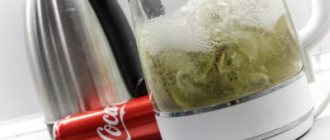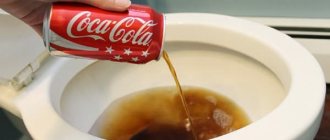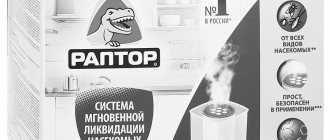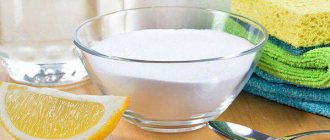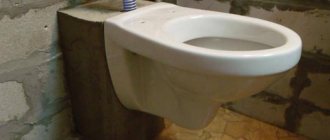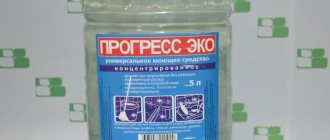Few people know that cleaning the toilet with Coca-Cola is easy and simple. The debate about the benefits and harms of this drink does not end since its widespread use on the market.
You can clean the toilet not only with special products, but also with drinks containing phosphoric acid.
If we say that Coca-Cola is harmful as a drink for frequent use, it should also be noted that it is very useful in the household. The reason for this is the chemical composition of the carbonated sweet drink.
When does a urinary stone appear?
Urine contains minerals in its composition. When it gets on the walls of the toilet, these minerals settle and over time form plaque, and then growths. There are especially many such growths under the rim of the toilet.
With timely flushing, urinary stones form much more slowly. But additional measures are required to prevent it from forming at all, and even more so if it has already formed.
There are several reasons for the formation of urinary stones:
- untimely flushing after going to the toilet;
- insufficient pressure when draining water if the tank is faulty;
- Damaged toilet enamel increases porosity and surface roughness.
This is interesting: Heating cable for pipes, heating wire for water supply, sewerage, plumbing, installation outside and inside plastic pipes
How to remove a urinary stone
Urinary stones cannot be removed immediately. You will have to pour more than one bottle of product on it and wipe off more than one brush. For removal, you can use such universal products as soda, borax, ascorbic acid, hydrogen peroxide, etc.
1. Soda, preferably caustic. It can be sprayed onto the surface of the toilet. It is advisable to do this at night so that the product remains on the walls and under the rim for at least 5 hours. After this time, press the flush and at the same time scrub the toilet with a brush. Attention! When wet, caustic reacts with the release of heat. If you work with it without gloves, you can get burns.
2. Borax. This powder is sold at the pharmacy. The cleaning principle is the same as using soda.
3.Ascorbic acid (vitamin C). Take a pack of ascorbic acid, maybe 2, depending on the age of the plaque. Crush the tablets into powder and use as other powdered products.
4.Hydrogen peroxide. It is better to pour the product into a spray bottle and spray it on the walls of the toilet. You will have to do this operation many times and remove the stone layer by layer with a brush. When cleaning, you need a lot of water pressure. For those who have a shared bathroom and the shower hose is long enough, you can direct the shower stream directly into the toilet and scrub off the plaque.
5.Whiteness. This product contains chlorine, which is a cleaning agent. It is better to spray the liquid on the walls of the toilet. You can wet a rag and stick it to the walls. It is important that the effect of the product on plaque is as long as possible. In the morning, carefully remove the rag and clean the toilet with a brush. Be sure to wear gloves when working with white.
6. Hydrochloric acid. This is a radical remedy for particularly difficult cases. The substance is extremely dangerous, and you need to wear gloves and a respirator when working with it. The hood in the toilet must be in good condition. Carry out the procedure while there are no children in the house, and store the acid under lock and key. Pour the acid into the drain hole and leave the toilet closed. After a few hours, flush the toilet several times, go over its surface with a brush and flush again.
How to remove water from a toilet for cleaning
If you start work with water in the neck, the concentration of products will not be enough to completely destroy drips and formations. You need to remove all the water from the toilet to make it easier to clean the walls inside the container. There are three ways to do this:
- Wearing gloves, scoop out the liquid using a small long-handled ladle or disposable cup. Remove any remaining moisture with an old towel.
- Pump out the water using a technical syringe . Also blot off the remains with a rag.
- Place an empty plastic tube into the hole, press on it, and water is sucked out. Squeeze the liquid into a bucket.
All stages of work are carried out wearing gloves.
Hints
How is this effect achieved? It turns out that the popular drink contains orthophosphoric acid, which can dissolve stains, rust, urinary stone and lime deposits. In addition, Coca-Cola has the following advantages over other cleaning products:
- Eco-friendly. Does not harm the environment.
- Non-toxic. Unlike most detergents, it does not have a strong odor. Does not have a negative effect on human skin and mucous membranes.
- Gently cleans sanitaryware. You don’t have to worry about damage and scratches on its surface, on which plaque can subsequently settle even more.
- Safe. This is especially important if there are children in the house. Even if a child licks a bottle out of curiosity, negative consequences are excluded.
- Easy to use.
- Available in any store.
But keep in mind that the drink is not able to deal with greasy stains on the surface of the toilet!
Possible harm
Coca-Cola, like any soda, contains a lot of sugar. Glucose will remain inside the toilet after cleaning and create a breeding ground for bacteria and other microorganisms. This is the only harm that cola can cause to plumbing fixtures. To eliminate unpleasant consequences, you can do the following:
- treat the toilet after cleaning with an antibacterial drug;
- just buy a drink with a sweetener.
Any carbonated drinks do an excellent job of removing limescale, urinary stones and other complex toilet stains. Apart from the cheapest ones, they contain the least amount of carbonic acid. There is currently no direct evidence that cola is truly the most effective. If desired, it can be replaced with “Fanta”, “Sprite” or any other soda from a comparable price category. These drinks are perfect for cleaning plumbing fixtures.
Plumbing Cleaning Options
When cleaning a toilet with Coca-Cola, there are a couple of options - slow and fast. In both options, the task is to clean the toilet bowl, under the rim of the toilet, and in the slow version, also its bottom. Although it is possible to clean the bottom using the quick method, then it ceases to be so efficient. A two-liter bottle of the drink is enough for both fast and slow cleaning options.
Preventing contamination
Stubborn stains are easier to prevent than to get rid of. To consolidate the result after cleaning with Cola, you need to use a disinfectant. If there are none, acetic acid will do.
To keep the toilet always sparkling clean, you need to follow certain rules:
- periodically carry out preventive cleaning without waiting for plaque to form, ideally daily cleaning;
- make sure that water does not constantly leak from the tank;
- Use soap products designed for protection, usually cistern soap or products that attach to the toilet rim.
You can familiarize yourself with the rules for cleaning a toilet with Coca-Cola in the video, which clearly shows all the steps of the process. Users of online resources willingly share their advice.
Quick option
With this cleaning method, they begin to act as usual - take a brush and remove easily cleaned surface contaminants. Then you need to rinse off the water and wait until the surface of the bowl dries, then at the next stage the concentration of Coca-Cola will be greater and it will work better. After this, pour all the dirt out of the drink bottle, take an unnecessary rag, moisten it with Coca-Cola and apply it to the dirty areas.
To clean lime deposits and rust under the toilet rim, you can also place a rag soaked in a drink there. And to simplify the task - toilet paper soaked in it. Then, at the end of the procedure, the paper can simply be pulled out and washed off. The remaining Coca-Cola is poured into the toilet. Next, close the lid and leave everything for an hour and a half. After this time is over, take out the rag, throw it away, and rinse thoroughly.
This is interesting: Correct installation of a pneumatic tube with a BRS collet fitting
Can increase washing efficiency
Cola is irreplaceable when you need to wash towels, aprons, casual clothes or rags from:
- grease stains;
- fuel oil;
- rust;
- machine oil.
You just need to fill things with soda and leave them for several hours, and the acid will do its job - separate the fat from the fabric. Then you need to wash them - and the stains are gone.
Features of the drink as a cleaning product
Coca Cola is a universal remedy: it will cope with most contaminants.
This drink has the following properties:
- It contains phosphoric acid in small doses. It ensures the dissolution of stubborn stains. Therefore, it is often used in cleaning.
- Removes rust well. Therefore, it is used for cleaning toilet tanks and its individual elements.
- Eliminates extraneous odors and there is no need to ventilate the room, as, for example, when using chlorine-containing detergents.
But it is important to remember that carbonated drinks contain a lot of glucose, which creates favorable conditions for the growth of bacteria. Therefore, it is impossible to do without treatment with antibacterial liquids.
The whole procedure is no different from regular cleaning with other detergents. To remove contaminants, take a can of cola, distribute it evenly over the inner surface of the toilet and leave for an hour and a half for the chemical reaction to begin.
But the drink is not suitable for removing grease stains. Therefore, if there are such stains, they will have to be removed manually using more serious means.
Also, using Coca-Cola will not help cope with contamination of surfaces located under water. Therefore, before washing, you should remove as much water as possible.
Before cleaning, you should make sure that the tank does not leak and that water does not leak from it into the bowl, since if liquid constantly flows, it will wash away the active substances and there will be no effect.
The longer the drink remains on the surface, the better the result. The reaction will be more successful if you fill the toilet with carbonation all night or carry out the treatment several times in a row.
Difficult stains require a special approach. If there are old stains, more thorough cleaning will be required.
Adviсe
- As noted above, any other carbonated drink can be as effective as Coca-Cola due to its carbonation content. Soda can be the best cleaning agent since it doesn't leave a sugary residue behind.
- It may not work for oil stains, as proven on MythBusters
. Soda only cleans mineral stains. - The acids contained in Coca-Cola do not make it dangerous to drink. Orange juice, for example, is much more acidic.[5]
- If you do not live alone, warn your household about your actions in advance. Otherwise, they may think you forgot to flush and will flush it for you, thwarting your altruistic attempts to clean the toilet.
How to properly clean the surface
Use an additional brush to remove old dirt
To avoid damage to the surface, the procedure is carried out as follows:
- First, all contaminants are completely removed. To do this, take a brush. Using smooth movements, remove plaque and other stains before using cola. Use a brush to wipe the dirtiest places.
- After this, take a material that absorbs moisture well. It is important that the liquid evenly covers the contaminated areas.
- Dip a piece of cloth or sponge into Coca-Cola and place it on all areas where plaque has formed. To achieve a more pronounced effect, additionally pour a little more drink onto the rag. This must be done at least once every half hour so that the rags do not dry out. After this, close the toilet lid and leave for 2 hours.
- After the designated period, the materials are removed, and the surface of the plumbing is watered generously with cool water or simply drained several times.
This is the fastest and safest method of surface treatment. But it will not help much against stubborn dirt and rust, so it is better to resort to special products containing acids and alkalis.
Cleaning the toilet with cola can be done in other ways. Mechanical action is carried out as follows:
- Wipe the surface with a brush.
- Pour some soda into the bowl.
- Leave for the maximum possible period of time, no less than an hour.
- After this, they go through it again with a brush.
- Finally, wash away any remaining contamination with clean water.
Since there is contact with the toilet during processing, you need to wear gloves, and after completing the procedure you should wash your hands with antibacterial soap.
There is also a hot cleaning method. Due to the influence of high temperatures, the chemical reaction intensifies. Therefore, the result in removing complex contaminants will be better. There is no need to boil the cola. Just put the glass in the microwave and warm it up a little. But when working with hot liquid, certain risks are possible. Therefore, it is important to follow these rules:
- Under no circumstances should liquid be heated in a hermetically sealed container, otherwise the container may explode.
- The best option would be to use a special glass-ceramic container for microwave ovens. Although weak, hot acids can cause plastic deformation.
- It is important to protect your hands, as heated cola will fizz and foam.
It is impossible to use too hot a liquid for processing, as under the influence of sharp temperature fluctuations the enamel will crack.
If you need a stronger blow to the dirt, you will have to use a combination of cola and citric acid. Add a spoonful of citric acid to a glass of drink, mix thoroughly and treat contaminated surfaces.
The procedure for cleaning the toilet with cola is ideal if there are children in the family, as it is a non-toxic and environmentally friendly product.
Methods of carrying out work
Let's look at how to clean a toilet with Coca-Cola using two methods, each of them differs in the duration of the procedure and some features of the work. All operations are very simple and can be easily done with your own hands; in addition, since the price of the drink is low, you can save money, and even if the result is not as expected, you will not incur large expenses.
Quick option
The instructions for carrying out the work are as follows:
All contaminants must be removed from the surface; if part of the plaque is removed with a brush, it must also be removed. After this, you need to wait a short period of time for the walls to dry completely, this will significantly increase the efficiency of further processing.
Next, you should find a rag or any other material that absorbs moisture well; the better the absorbency, the more effective the treatment will be
It is important that the surface is exposed to the liquid as intensely and evenly as possible.
After this, rags or sponges are soaked in the drink and applied to all areas where plaque is present. To improve the effect, the laid rags are additionally watered with cola; the material can be moistened periodically (once every half hour)
It is also recommended to close the toilet lid and leave for 1-2 hours. Next, all attached materials are removed, and the surface is washed with clean water (you can simply flush the toilet several times).
Traditional option
Let's look at how to clean a toilet with Coca-Cola using a method that takes more time and is more popular among people.
The sequence of actions is as follows:
- First of all, the surface is cleaned of dirt and greasy stains, if any (cola works well with mineral deposits, but practically does not dissolve grease, so the results depend on the cleanliness of the surface).
- Next, the surface is treated with Coca-Cola, while trying to fill all problem areas and even get under the toilet rim. After this, it is recommended to leave the product for 1-2 hours, or better yet, leave it overnight so that the plaque softens even more.
- After this, the toilet needs to be cleaned with a brush or a brush; this should be done carefully and carefully, treating each area. As a rule, the plaque that cola can cope with softens and is removed quite easily. Otherwise, you will need more powerful tools.
- Finally, the last part of the work is washing the surface with clean water. You should carefully study the result of this operation; if there are positive changes, the procedure can be repeated. If the plaque is completely removed, such cleaning can be carried out once a month for preventive purposes.
There are other options for using the drink in question, most often they involve the addition of some other components. But all these methods have not been tested, so we will not describe them.
Causes of plaque
Limescale (or water stone) is formed from calcium and magnesium salts found in water. These are plaques and yellow-orange stains that appear in flush areas, on the bottom of the toilet, under the rim and even on the lid. The more time passes between scheduled cleanings, the thicker the layer of deposits and the more difficult it is to clean them. You also need to regularly clean the tiles, bathtub or shower stall to remove limescale deposits.
Urine stone is the result of sedimentation of minerals contained in the urine. If you periodically forget to rinse off the water, unsightly streaks form on the walls, and then the stone turns gray-yellow.
The appearance of deposits is also promoted by:
- hard water,
- cracks and irregularities on the surface
- leaking tank
Attention! In addition to its unaesthetic appearance, stone in the toilet bowl is a source of unpleasant odor and a favorable environment for bacteria.
You can clean the toilet from limescale and urinary stone using improvised means that can be found in any home. In particularly advanced cases, if the toilet is old or has not been cleaned for a long time, you will have to resort to aggressive chemicals.
Enemies of toilet cleanliness
Already after a short time after cleaning, various stains appear on the inside.
Here are a few of them:
- Red stripes. It would seem, where would rust stains come from if the entire structure is made of plastic and ceramics. This type of pollution occurs for several reasons. One of them is the wear and tear of main water supply lines. In this state of affairs, oxide from the pipes easily penetrates into the water and reaches the water supply in a private house. But this reason is not the only one. Another one may appear if the water is oversaturated with iron. The high iron content in water leads to destructive factors - the tank and connections begin to leak.
- Limescale. The main reason is the content of lime, potassium and other mineral compounds in the water. As a result, a gray coating forms.
- Urine stone. It forms similar to limescale, but the main component is human urine. It also contains many mineral components, which are deposited on the walls of the ceramic. The main reason is irregular flushing and careless use of the toilet.
Since these contaminants have different compositions and origins, their removal will require compositions that differ from each other. But despite this, there are some universal methods.
It is worth understanding that for adhesion, surface roughness is necessary, so regular cleaning of the toilet will help maintain the glossy finish for as long as possible.
Roughness may occur as a result of contact with excessively hot liquids or objects. This can also cause microcracks to appear.
Removing thick plaque with strong acids
If no folk remedies or cleaning products help, you can use strong acids. These are extreme measures that should be used rarely and the exposure time strictly observed, since such chemicals can corrode the enamel and harm pipes and plastic parts.
Oxalic acid
Moderately toxic organic acid. A popular cleaning product for plumbing fixtures in the times of our grandmothers. Provides perfect whiteness and effectively removes stone. Nowadays it can be purchased at construction stores. Before use, carefully read the instructions and wear thick rubber gloves.
Mode of application:
- Pour powdered acid onto a damp cloth.
- Apply to contaminated areas. If you need to clean the drain, dissolve it in water.
- Wait 1 hour, during which time the plaque will dissolve.
- Rinse thoroughly with water using a brush.
Orthophosphoric acid
It is an inorganic acid of medium strength. Using it, you can not only clean the toilet from stone, but also remove rust from the internal parts of the tank. The main advantage of this acid is that it does not damage rubber and plastic elements. Mode of application:
- Pour 100-150 ml of acid into the tank and into the drain hole
- Wait 15 minutes
- Rinse with plenty of water and clean with a brush.
Hydrochloric acid
This is a very strong toxic agent. Will remove stone instantly but should be used with extreme caution. Before use, wear safety glasses, a respirator and thick rubber gloves. The vapors of this acid are also dangerous!
Mode of application:
- Apply liquid to the walls and pour half a glass into the drain hole.
- Exposure time – 10 minutes.
- Rinse with plenty of water
Attention! This method is not suitable if you have plastic pipes installed; they will leak due to acid damage.
Electrolyte
Battery electrolyte is produced on the basis of sulfuric acid; it can be found in any store for car enthusiasts. This strong and very dangerous product perfectly dissolves limescale and urinary stones. It can be used only in rare cases. The method of application is similar to the method with hydrochloric acid: apply, leave for 10-15 minutes and rinse with water. When using, follow all safety precautions, avoid splashing the product, as you can get chemical burns.
Strong chemistry in the fight against deposits
«>
Before you begin the procedure of cleaning the toilet using strong chemicals, you must read the instructions. There you can find out how much of the drug should be used at a time
It is also important to observe the duration of action. A person needs to protect the respiratory and vision organs, as well as the skin of the hands from accidental contact with alkalis and acids
Before dissolving limescale in your toilet, you should consider whether the product is suitable for use in a home where the piping is made of plastic. Such compositions should not be used for local treatment plants such as septic tanks. This applies to liquid alkalis and acids. An example is phosphoric acid in the form of a 7% solution. It can be used to clean the toilet from stone, as well as free the internal components of the cistern from corrosion.
To use, pour 100 g of solution into the tank and toilet. After 15 minutes, the water is washed off and the surface is cleaned with a brush. The acid is affordable and does not affect plastic, rubber and enamel. Before you clean the toilet, you must choose a product. One of them is a solution of hydrochloric acid
This composition is very strong, so it requires some caution. Inhaling vapors is prohibited, and hands must be protected
The walls are wiped, and then the acid in the amount of one glass is poured into the bowl. In 15 minutes you can rid your plumbing fixture of dirt. After pouring the mixture, the lid is closed. This product is not suitable for toilets connected to plastic pipes.
Preventive measures against limescale and urinary stones
- Clean the toilet at least once a week with special cleaning products. The frequency of washing depends on the number of people who use the plumbing fixtures.
- After each use, drain the water and use a brush if necessary.
- Do not allow the tank to leak. To do this, make minor repairs or replace drain fittings in a timely manner.
- Use soap products that are placed in the tank or attached to the walls of the toilet. They will help maintain cleanliness between cleanings and provide a pleasant smell.
- Do not flush leftover greasy food down the toilet.
- If you are purchasing a new toilet, choose the smoothest product possible, preferably made of porcelain. Plumbing porcelain is more expensive than earthenware, but due to its dense structure it is smoother. Accordingly, it will be polluted less and less often. It is also worth purchasing a product with a two-button flush, which will reduce water consumption.
As you can see, the rules are simple. It is much easier to take care of plumbing fixtures in a timely manner than to remove “thickets” of stone and plaque on a neglected product.
Rules for working with household chemicals
You cannot mix two or more types of products at the same time in order to wash off rust and plaque in the toilet, as the following situations may arise:
- There is a possibility that a dangerous chemical reaction will occur that will damage the sewer pipes or cause an explosion;
- The vapors of the two derivatives, when mixed, negatively affect the eyes and respiratory organs of a person, skin (a migraine or an allergic reaction begins);
- When combined, some elements create a fire hazard.
When treating toilet equipment from plaque, it is important to protect yourself from inhaling harmful fumes and coming into contact with the product. The mouth is protected with a medical mask or respirator, hands with rubber gloves. The door to the toilet is left open.
How it works?
Any carbonated drink contains some carbonic acid - this is due to the large amount of dissolved carbon dioxide, which provides an abundance of the very bubbles that make soda so attractive.
In addition, Coca-Cola contains a high concentration of orthophosphoric acid, which perfectly helps get rid of rust and is used in many other detergents. It is the combination of these two acids with active bubbles that gives an amazing effect in the fight against limescale and persistent pollution of organic origin.
Important! Cola contains a large amount of sugar. Glucose will create a favorable environment for nutrition and active reproduction of microorganisms. Additional antibacterial care cannot be avoided.
Possible harm
Coca-Cola, like any soda, contains a lot of sugar. Glucose will remain inside the toilet after cleaning and create a breeding ground for bacteria and other microorganisms. This is the only harm that cola can cause to plumbing fixtures. To eliminate unpleasant consequences, you can do the following:
- treat the toilet after cleaning with an antibacterial drug;
- just buy a drink with a sweetener.
Any carbonated drinks do an excellent job of removing limescale, urinary stones and other complex toilet stains. Apart from the cheapest ones, they contain the least amount of carbonic acid. There is currently no direct evidence that cola is truly the most effective. If desired, it can be replaced with “Fanta”, “Sprite” or any other soda from a comparable price category. These drinks are perfect for cleaning plumbing fixtures.
Cleaning the toilet with cola is easy
There is nothing complicated about cleaning the toilet with cola. The cleaning technique is no different from the usual cleaning with a special product: pour a can of drink evenly over the inner surface of the bowl and rinse off after an hour and a half.
Nuance! Coca-Cola will not help get rid of grease stains. If such a problem exists, additional manual processing cannot be avoided.
Unfortunately, the cola toilet cleaning method will not clean surfaces that are under water. To wash these areas, it is recommended to first scoop out as much water as possible.
Important! Before cleaning, make sure that there is no water leakage from the tank into the bowl. A constant flow of liquid will wash away the active substances.
The longer the drink reacts with the surface, the better the result. To get the maximum effect, it is advisable to repeat the procedure or leave Coca-Cola overnight.
Difficult stains - a special approach
Sometimes it may happen that old dirt has accumulated on the walls of the bowl and the toilet requires especially thorough cleaning. There is nothing scary or frightening about this. To achieve cleanliness you will have to put in a little more effort, but even in such cases, cola can provide excellent cleaning results.
Old proven mechanical cleaning
It happens that you have to clean heavy limescale deposits and old stains that regular rinsing does not help. In this situation, the familiar toilet brush, popularly known as a brush, will be an excellent ally. Mechanical action with a brush will help loosen dirt and plaque before a chemical attack with cola.
The typical procedure is as follows:
- It is necessary to wipe the surface with a brush, paying special attention to the most contaminated areas.
- Fill the toilet bowl with 2 glasses of Coca-Cola.
- Leave for as long as possible (minimum 1 hour).
- Brush again.
- Wash away any remaining dirt with water.
Such cleaning involves direct contact with the toilet; it should be carried out with gloves; upon completion of work, you must wash your hands with antibacterial soap.
Hot cleaning method
High temperatures enhance chemical reactions. Therefore, in the fight against complex contaminants, hot soda is more effective. There is no need to bring the cola to a boil, just heat it in the microwave. However, working with hot liquid, especially soda, carries certain risks. The following must be taken into account:
- Heating a liquid, especially a carbonated one, in a hermetically sealed container is strictly prohibited. The result of the experiment will be disastrous: the container may explode.
- It would be optimal to use a special container for a microwave oven made of glass ceramics. Plastic can be deformed under the influence of weak but hot acids.
- Hot cola will fizz and foam more intensely than usual. The skin of your hands should be protected.
Otherwise, the procedure is no different from the simplest methods of cleaning plumbing. It is important not to overheat the liquid, since a strong temperature difference can lead to cracks in the enamel.
Increased impact on pollution
Perhaps, for some, the use of soda alone will not seem effective enough, or the hope for cola will be weaker than the faith in the power of pollution. It is for such cases that there is a particularly effective complex remedy: a combination of cola and citric acid. Instructions for use and the result of its action can be seen in the video.
Methods for cleaning the toilet with cola are ideal for families with small children. This is a completely non-toxic and environmentally friendly product. The use of hand gloves is recommended to prevent contact with germs.
Steps
- Take one or two glasses of cola.
Open a bottle or can of cola. You don't need much to clean your toilet. 1.5 cups should be enough.
- Fill the toilet bowl with cola.
Pour Coca-Cola around the bowl. Let it flow through the spots. Make sure you cover all the stains with cola; there should be a thin layer of cola on the stains.
Try removing stubborn stains by hand with a rag soaked in cola. You can also use a spray bottle filled with Coca-Cola if you don't want to get your hands dirty.
- Let the cola settle.
The key is patience. The longer you leave the cola on, the more chance you give it to remove stains. Leave the cola in the bowl for at least an hour.
For best results, leave the cola overnight. - Rinse off the water.
The stains will slowly fade under the influence of the cola. Now, drain the water. Loose stains should be (at least partially) washed away with water.
- Repeat as needed.
At this point you can see how well the cola worked. Although Coca-Cola generally removes most types of toilet stains, it cannot completely remove all stains. If desired, simply reapply a second coat of cola and repeat the process.
If repeated use of cola does not remove stains, read the section below to learn how to remove particularly difficult stains in the toilet.
For stubborn stains
- Use a brush.
A good old-fashioned toilet brush will help when regular flushing doesn't remove stains. The mechanical action of a brush (or similar material) will help loosen and remove stubborn stains from the walls of the bowl after you have washed them with cola. If you're squeamish, wear gloves and be sure to wash your hands after cleaning.
- For best results, wipe before and after using Coca-Cola. In other words:
Open the cup and brush out any stains
- Pour in Coca-Cola
- Leave it for a while
- Brush again and wash away stains with water.
- Typically, chemical reactions occur much faster at high temperatures.
The acid reactions that allow cola to remove stains are no exception. For tough stains, try heating the cola before using. There is no need to boil, but it should be hot for best results (but be careful when handling hot Coca-Cola).
- Never heat soda or similar liquid in a sealed or metal container. This may result in dangerous splashes of hot liquid. Instead, pour the liquid into a microwave-safe container (such as a glass ceramic container) and then heat only.
The hot cola will fizz more than usual, so you may want to wear gloves to avoid splashing your skin.
- Use Coca-Cola along with other cleaning products.
Although cola removes many stains, it is not the most effective solution. For very difficult stains, you can try combining it with other cleaning methods. Here are some other cleaning methods you can use:
- Try mixing 1/2 cup vinegar and 1/4 cup baking soda (or 2 teaspoons borax) in a 2-quart pitcher of water. Apply the mixture to the toilet, wipe and leave for an hour before flushing. If necessary, complete the cleansing with Coca-Cola.
To combat mold, try mixing one part hydrogen peroxide with two parts water in a spray bottle. Spray the solution onto the moldy surface, let it sit for at least one hour, and rub until the mold is dissolved. Use Coca-Cola to remove any residual stains or scale around the moldy area.
- Try mixing borax, citric acid and cola in a 2:1:1 ratio for another all-purpose cleaner. Apply the mixture to the toilet, leave for an hour, then flush.
- Know when Coke isn't the best choice.
Cola is suitable for removing most stains commonly found in toilets. However, it does not always work on rarer spots, so other solutions are sometimes necessary. See below:
- Cola is not suitable for removing oil and grease. For these, you're better off using dish soap or a strong acid like vinegar.
Cola does not kill germs. Moreover, the sugary residue from regular Coca-Cola can become food for some types of bacteria. Use soap, cleaning solutions, or alcohol-based disinfectants to kill microorganisms.
- Cola will not remove stains from ink, dyes, or pigments. Alcohol and other chemicals will help you here.
This is interesting: Is it possible to keep artificial flowers at home - signs and facts
Interesting facts about Coca-Cola
To find out the specifics of cleaning plumbing using this drink, you need to know a couple of interesting facts:
| Compound | The liquid contains a small amount of phosphoric acid, which determines the fact that it can dissolve very persistent plaque of various origins. The effectiveness of the composition in similar cases has been proven by repeated experiments. |
| Good rust removal | Many people know that if you place an iron object in cola, then within 2-3 days it can completely remove corrosion from the surface. Just based on this, it can be used to clean the toilet tank or its individual elements |
| Safety | Unlike aggressive chemicals, this option does not harm human health and does not cause chemical burns or allergic reactions. It goes without saying that the effectiveness of the drink as a cleaning agent is lower, but it is excellent for combating plaque that has not yet penetrated deeply into the surface. |
| Removing foreign odors | In addition to all the properties listed above, one more fact should be noted - treating the surface with the drink in question helps get rid of the unpleasant odor |
Does cola clean silver?
Silver items require cleaning from time to time. Cup holders and spoons, figurines and even decorative inserts in furniture sets become covered with dust, green deposits, and rust. Coca-Cola perfectly cleans silver, and when heated, it can remove any old stains.
For cleaning you will need 1/2 liter of soda and a deep metal container. To restore the shine and purity of silver products, you need to do the following work:
- pour cola into a container;
- put items that require cleaning there;
- place on a gas or electric stove;
- bring the liquid to a boil;
- boil for 5 minutes;
- remove the products and wait until they cool down;
- rinse in clean water;
- wipe dry with cotton cloth.
We recommend: What to do if the smell in your apartment from your neighbors is poisoning your life?
This is how you can easily and inexpensively remove any stains from silver items.
Can cola clean a toilet?
The history of the creation of the drink began back in 1886. Manufacturers carefully hid the components used in Coca-Cola soda from competitors. It was not difficult for modern experts to figure out the chemical composition of the drink.
In addition to purified water and sugar, the Coca-Cola drink contains the following chemicals:
- orthophosphoric acid, which acts as an acidity regulator;
- carbon dioxide as a preservative;
- lemon acid;
- caramel;
- flavorings;
- caffeine.
Coca-Cola has a mild acidic composition, so it does not harm earthenware surfaces. Carbon dioxide and phosphoric acid do an excellent job of removing contaminants.
Citric acid effectively fights persistent limescale, enhancing the effect of the main components.
The accidentally discovered ability of the drink made it a popular household remedy. Cleaning a toilet with Coca-Cola is quick and easy.
Important! Using Cola, you can only wash those areas that are above the water. Water reduces the concentration of acids, which makes the product practically helpless against plaque.
Article information
This article was produced by our experienced team of editors and researchers, who reviewed it for accuracy and comprehensiveness.
Categories: House
In other languages:
English: Clean a Toilet with Coke, Français: nettoyer les toilettes avec du Coca, Italiano: Pulire un WC con la Coca Cola, Español: limpiar el inodoro con Coca Cola, Português: Limpar um Vaso Sanitário com Coca Cola, Deutsch: Toilette mit Coca Cola reinigen, Nederlands: Een wc schoonmaken met Coca Cola, 中文: 用可乐清洗马桶, 日本語: コーラでトイレを掃除する, Čeština: Jak vyčistit záchod pomocí koly, Bahasa Indonesia: Membersihkan Toilet dengan Coca Cola, ไทย: ใช้ Please note: Please contact us. Coca cola
- Seal
- Edit
This page has been viewed 49,110 times.
